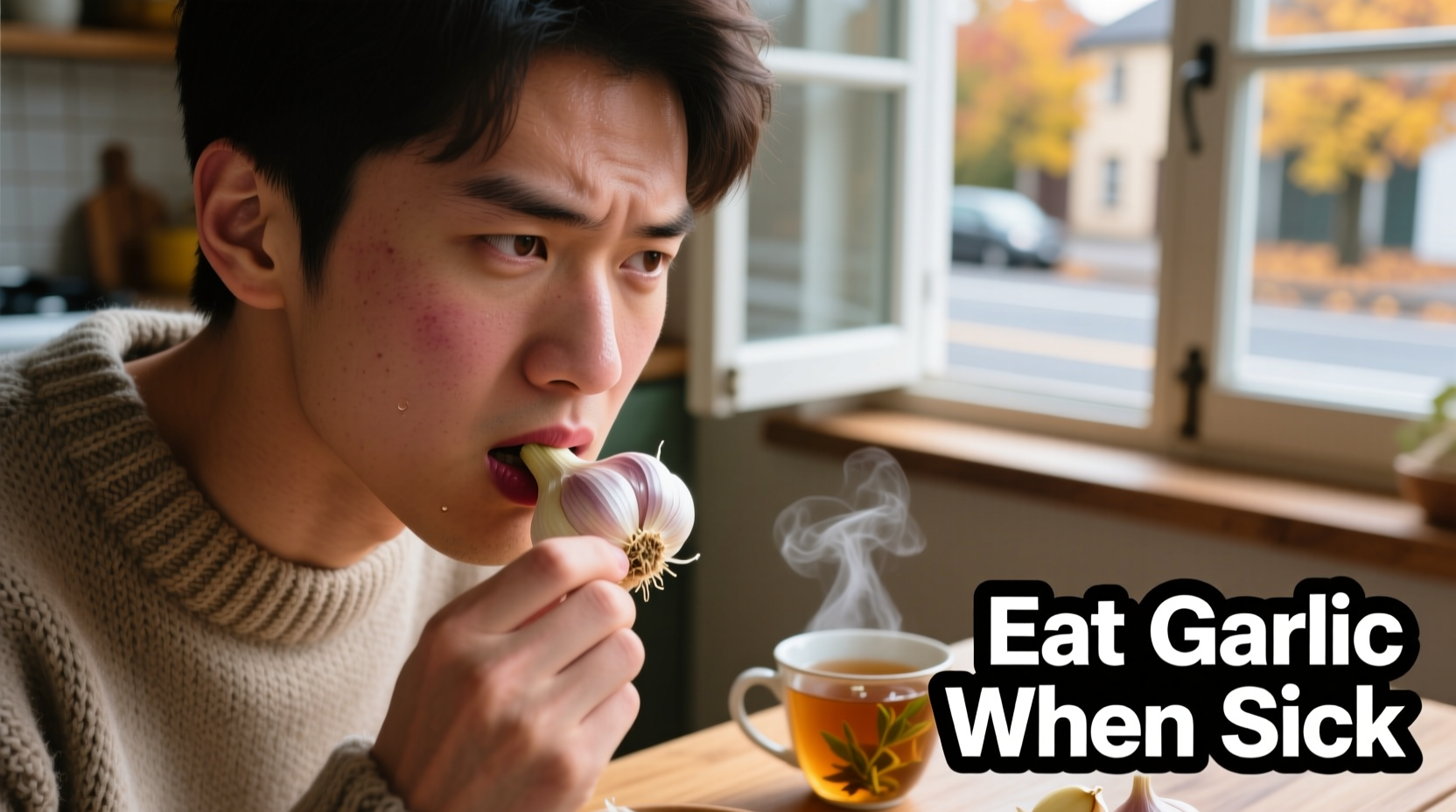Yes, eating garlic when sick may provide modest immune support due to its allicin content, but it's not a cure-all. Scientific evidence shows garlic can slightly reduce cold duration by about one day on average and may help prevent some respiratory infections when consumed regularly, but it won't eliminate symptoms overnight or replace medical treatment for serious illnesses.
When you're feeling under the weather, the question "should I eat garlic when sick?" often arises as you search for natural remedies. While garlic won't magically cure your cold or flu, understanding its actual benefits and limitations can help you make informed decisions about incorporating this pungent bulb into your recovery strategy.
What Science Says About Garlic and Immunity
Garlic contains allicin, a sulfur compound formed when cloves are crushed or chopped. This compound gives garlic its distinctive smell and provides most of its potential health benefits. According to research published in the Journal of Nutrition, allicin demonstrates antimicrobial and immune-modulating properties that may help your body fight certain infections.
The most compelling evidence comes from a comprehensive review by the National Center for Biotechnology Information, which analyzed multiple clinical trials on garlic's effects on upper respiratory infections. The review concluded that regular garlic consumption appeared to reduce the frequency of colds by approximately 63% and shorten illness duration by about 1.5 days compared to placebo.
| Claim | Scientific Support | Limitations |
|---|---|---|
| Prevents colds | Moderate (with regular consumption) | Must be consumed consistently, not just when sick |
| Shortens cold duration | Modest (about 1 day reduction) | Effect varies by individual |
| Cures infections | None | Not a replacement for medical treatment |
| Boosts immune system | Emerging evidence | Effects are subtle and cumulative |
How to Use Garlic Effectively When Sick
Simply eating raw garlic cloves won't maximize potential benefits. The way you prepare and consume garlic significantly impacts its effectiveness:
- Crush and wait: After crushing garlic, let it sit for 10 minutes before consuming to allow maximum allicin formation
- Raw vs. cooked: Raw garlic provides more allicin, but cooked garlic still offers benefits through other compounds
- Dosage matters: Studies showing benefits typically used 600-1,200 mg of aged garlic extract or 1-2 fresh cloves daily
- Timing is key: Regular consumption provides better preventive benefits than starting only when symptoms appear
For immediate symptom relief when already sick, try adding freshly crushed garlic to warm broths or honey-based remedies. The heat helps release additional beneficial compounds while the liquid base makes consumption more tolerable.

When Garlic Isn't Enough: Important Limitations
While garlic offers potential benefits, it's crucial to understand its limitations when you're sick:
Garlic won't treat bacterial infections that require antibiotics, nor will it eliminate viral symptoms overnight. According to the Centers for Disease Control and Prevention, most colds and flu require rest, hydration, and symptom management rather than specific cures.
Additionally, excessive garlic consumption when sick can cause digestive discomfort, especially when your system is already compromised. Some people experience heartburn, nausea, or diarrhea with more than 2-3 cloves daily. Those taking blood thinners should consult their doctor before significantly increasing garlic intake, as it can enhance anticoagulant effects.
Practical Garlic Remedies for Common Illnesses
Here are three evidence-informed ways to incorporate garlic when you're feeling under the weather:
- Garlic Honey Syrup: Combine 4 crushed garlic cloves with 1/4 cup raw honey. Let sit for 12 hours, then take 1 teaspoon every few hours for sore throat relief. The honey provides additional antimicrobial properties while soothing irritated tissues.
- Immune-Boosting Broth: Add 2-3 crushed garlic cloves during the last 10 minutes of cooking chicken or vegetable broth. The warmth helps release garlic compounds while providing hydration and electrolytes.
- Garlic Steam Inhalation: For congestion relief, add 2 crushed garlic cloves to a bowl of hot water, cover your head with a towel, and inhale the steam for 5-10 minutes. This delivers garlic compounds directly to respiratory passages.
When to Seek Medical Care Instead of Relying on Garlic
While garlic can complement your recovery, certain symptoms require professional medical attention regardless of home remedies:
- Fever above 103°F (39.4°C) lasting more than 48 hours
- Difficulty breathing or shortness of breath
- Chest pain or pressure
- Symptoms lasting longer than 10 days without improvement
- Severe dehydration symptoms
The Mayo Clinic emphasizes that while home remedies like garlic can provide comfort, they shouldn't replace appropriate medical care for serious conditions. Using garlic as part of a comprehensive approach that includes rest, hydration, and conventional treatments when necessary offers the best path to recovery.
Conclusion: Realistic Expectations for Garlic When Sick
Eating garlic when sick can provide modest immune support and potentially shorten your illness by a small margin, but it's not a miracle cure. The most significant benefits come from regular consumption as part of a healthy lifestyle rather than as a last-minute remedy when symptoms appear.
For best results, incorporate 1-2 cloves of fresh garlic daily into your diet year-round, prepared properly to maximize allicin content. When illness strikes, continue moderate garlic consumption while prioritizing rest, hydration, and appropriate medical care when needed. This balanced approach leverages garlic's potential benefits without overestimating its capabilities in your recovery process.











 浙公网安备
33010002000092号
浙公网安备
33010002000092号 浙B2-20120091-4
浙B2-20120091-4